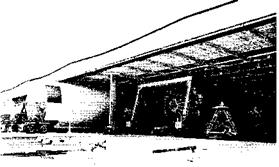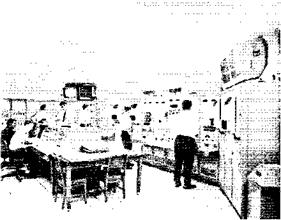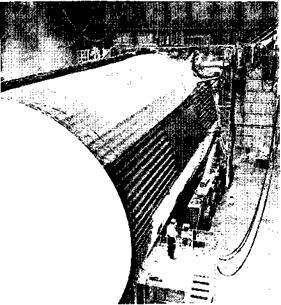TRIPLE RELIABILITY
To ensure the accuracy and reliability of guidance information, critical LVDC circuits are provided in triplicate. Known as triple modular redundancy (TMR), the system corrects for failure or inaccuracy by providing three identical circuits. Each circuit produces an output which is voted upon. In case of a discrepancy, the majority rules, and a random failure or error can be ignored. In addition, the LVDC has a duplexed memory, and if an error is found in one portion of the memory, the required output is obtained from the other and correct information read back into both memories, thus correcting the error.
The ST-124-M inertial platform provides signals representing vehicle attitude. Since a signal error could produce vast changes in ultimate position, component friction must be minimized. Therefore,
the platform bearings are floated in a thin film of dry nitrogen supplied at a controlled pressure and flowrate from reservoirs within the IU.
PRELAUNCH FUNCTIONS
In addition to guidance computations, other functions are performed by the LVDC and the LVDA. During prelaunch, the units conduct test programs. After liftoff they direct engine ignition and cutoff, direct stage separations, and conduct reasonableness tests of vehicle performance. During earth orbit, the computer directs attitude control, conducts tests, isolates malfunctions, and controls transmission of data, plus the sequencing of all events.
Instrumentation
A basic requirement for vehicle performance analysis and for planning future missions is knowing what happened during all phases of flight and just how the vehicle reacted. The Ill’s measuring and telemetry equipment reports these facts. Measuring sensors or transducers are located throughout the vehicle monitoring environment and systems’ performance.
Measurements are made of mechanical movements, atmospheric pressures, sound levels, temperatures, and vibrations and are transformed into electrical signals. Measurements also are made of electrical signals, such as voltage, currents, and frequencies which are used to determine sequence of stage separation, engine cutoff, and other flight events and to determine performance of onboard equipment.
In all, the IU makes several hundred measurements. A wide variety of sensors are used to obtain all kinds of information required: acoustic transducers monitor sound levels; resistor or thermistor trans-
SATURN V NEWS
ducers monitor temperature environments; bourdon – tube or bellows transducers measure pressures; force-balance, or piezoelectric accelerometers measure force levels at critical points; flow meters determine rates of fluid flow.
Various measuring devices produce a variety of outputs, and before these outputs can be effectively utilized, they must be standardized to some extent. Signal conditioning modules are employed to adapt transducer outputs to a uniform range of 0-5 VDC.
Different types of data require different modes of transmission, and the telemetry portion of the system provides three such modes: SS/FM, FM/FM, and PCM/FM. Each type of information is routed to the most suitable telemetry equipment; a routing is performed by the measuring racks within the IU.
To get the most out of the transmission equipment, multiplexing is employed on some telemetry channels. Information originated by various measuring devices is repeatedly sampled by multiplexers, or commutators, and successive samples from different sources are transmitted to earth.
Information sent over any channel represents a series of measurements made at different vehicle points. This time-sharing permits large chunks of data to be handled with a minimum amount of equipment. The LVDC also helps in data transmission.
For instance, when the vehicle is between ground receiving stations, the LVDC stores important PCM data for later transmission. Once the vehicle leaves the earth’s atmosphere, sound levels requiring air for continuance no longer exist. The LVDC signals a measuring distributor to switch from unimportant measurements to those more critical to
|
IBM-DR-2 |
Typical Saturn Measuring System 7-6
REFERENCE
the mission. And during stage separation retro – rocket firing, when flame attenuation distorts or destroys telemetry transmissions, signals are automatically recorded by an onboard tape recorder, and transmitted later.
In order to monitor vehicle performance, ground controllers must know the vehicle’s precise position at all times. The RF section of the instrumentation system provides this capability, as well as linking the IU’s guidance and control equipment during flight.
TRACKING SYSTEM
Several tracking systems are used to follow vehicle trajectory during ascent and orbit. Consolidation of this data not only increases data reliability, but gives the best trajectory information.
Vehicle antennas and transponders, which increase ground-base tracking systems’ range and accuracy, make up the IU’s tracking equipment.
|
IBM-DR-7 |
Saturn V Instrument Unit Command System
A pulse or series of pulses of RF energy sent by ground stations to the vehicle’s general direction will interrogate the airborne transponder. In response, the transponder produces a pulse or series of pulses. Triangulation between precisely located ground stations determines point of origin of these reply pulses and fixes location of the vehicle.
Three tracking systems are employed in conjunction with the Saturn V IU: AZUSA, C-band radar, and the S-band portion of the command and communication system (CCS). Two C-band transponders are employed to provide tracking capabilities for this system independent of vehicle attitude. A single transponder is employed with the AZUSA system.
Real-time navigation, needed to update the guidance system, is received in the IU by a radio command link. But before it is sent, and before it is
SATURN V NEWS REFERENCE
accepted in the IU, both ground equipment and IU instruments scrutinize update information for accuracy. The slightest error in transmission could conceivably produce a greater problem than if the original data had been left alone.
The message goes from antenna to command receiver for amplification and demodulation. Then it is routed to the decoder for breakout into the original pattern of digital bits.
The first validity check is here. If there is an error in a bit, or a bit is missing, the entire message is rejected. Accepted commands get further checking in the command decoder and in the LVDC.
First the vehicle address is checked in the command decoder. This is important because commands for both IU instruments and the spacecraft use similar command links. If the spacecraft address is recognized, the IU ignores the message.
Passing this test, the message is sent to the LVDC. Upon receipt, the LVDC tests the message to determine if it is proper. If it is, then the command decoder releases a pulse via the telemetry link to the ground station verifying message acceptance. If the message fails the test, the LVDC rejects it and telemeters an error message.
Depending on the mission, several types of messages can be processed. For example: commands to perform updating, commands to perform tests, commands to perform special subroutines or special modes of operation, a command to dump or clear certain sectors of the computer memory, or a command to relay a particular address in the computer memory to the ground. Provisions have been made to expand the number of types of messages if experience indicates this is necessary.
















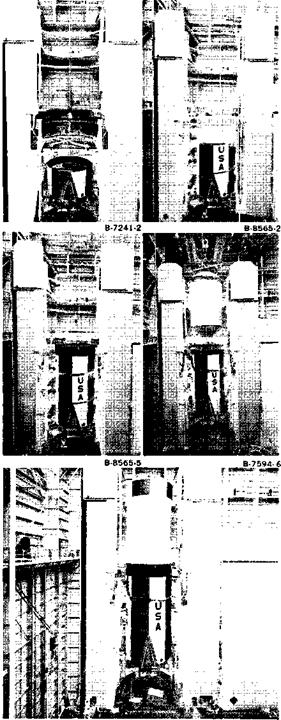
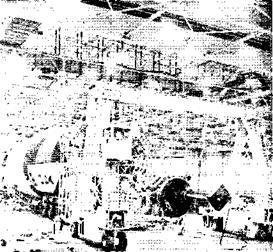
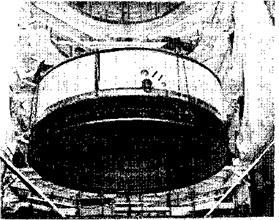


 The SS/FM system is reserved for pertinent research requirements. Vibration and acoustical data needed for manned flight development will be transmitted by this system.
The SS/FM system is reserved for pertinent research requirements. Vibration and acoustical data needed for manned flight development will be transmitted by this system.
